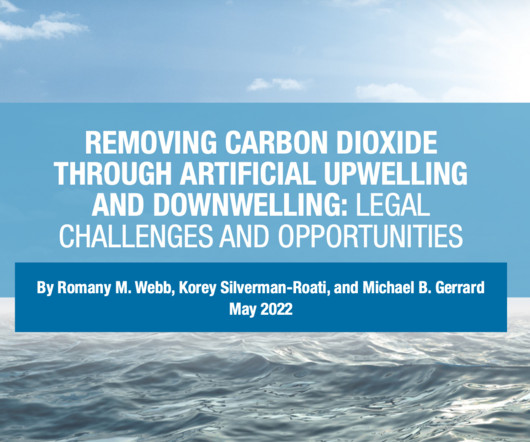Recent developments on carbon dioxide removal: Increasing policy support but governance issues remain
Law Columbia
JANUARY 5, 2023
Support for carbon dioxide removal (CDR) is growing globally. In its Sixth Assessment Report , released last year, the Intergovernmental Panel on Climate Change (IPCC) concluded that global carbon dioxide emissions must reach net-zero by the early 2050s to limit warming to 1.5 By Carolina Arlota and Korey Silverman-Roati.

























Let's personalize your content